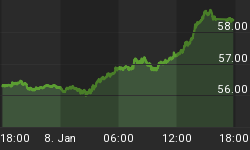Disenchanted with gold's lackadaisical performance over the last year, some investors are losing interest in the equities that are supposed to provide leverage to the metal's price movements. The press has added fuel to the fire by increasingly attacking gold-mining CEOs for rising production costs and weak stock prices. This has driven some investors to pursue ETFs or other vehicles as a replacement for gold stocks, while others have simply thrown their hands up and left the precious-metals space. Is this overreaction or rational decision-making?
We set out to objectively evaluate how gold-mining majors have been performing operationally in the current commodity bull market that started roughly at the beginning of 2002. We compare them against the S&P 500 - the mainstream "blue chip" index - to see if gold miners deserve the beating they've received. We also look at what may lie ahead for one of our favorite subsectors of the gold universe.
The majors we used for our analysis include the following companies: AngloGold Ashanti, Barrick Gold, Eldorado Gold, Gold Fields, Goldcorp, Kinross Gold, Newcrest Mining, Newmont Mining, Randgold Resources, and Yamana Gold. These are the top ten largest gold producers that existed throughout the time period we examined.
Size and Cash Flow and Net Income, Oh My
The market capitalization of the major producers has grown at an impressive rate since 2002. What may be surprising to some investors is how well it has tracked the gold price - and how strongly it has outperformed the S&P.
Another issue that has bothered investors has been that the majors have not been very good at generating cash for shareholders.
Although shares of mining majors have delivered outstanding gains for those who bought early into the current cycle - Eldorado Gold, for example, appreciated from C$0.91 to C$12.80 as of December 31, 2012, a whopping 1,306.6% gain - share price is just the tip of the iceberg when it comes to performance analysis. One of the metrics that provides insight into a company's inner workings, as discussed by Gold Field's CEO Nick Holland in his excellent Melbourne Mining Club address, is free cash flow (FCF).
Free cash flow is basically what is left after a company deducts capital expenditures (which are necessary to maintain growth) from its operating cash flow. It is the cash available for distribution to the company's shareholders. This parameter is often used as a performance metric along with net income. Some analysts consider these two measures as the ultimate health barometers for producing companies.
Changes in FCFM of the largest gold producers have been very volatile and don't paint the most optimistic picture at present. The data indicate that we are now in one of the toughest periods for generating free cash flow - even worse than 2008, which is saying something.
The S&P 500 looks much more stable in this regard, though there's been almost no growth.
Another performance metric relevant to shareholders is dividends. While FCF shows how much cash can potentially be allocated to dividends, dividend yield measures the actual payout. As a reminder, dividend yield is the ratio of a company's dividend per share to its share price. Dividend yields of the gold majors have not been that bad at all. Since 2010, they have grown at an impressive rate and are on track to close the gap with S&P 500 companies, though the median dividend yield of that group has remained higher during the whole commodity cycle that started in 2002 - definitely a gripe for some mining investors.
In terms of normalized net income (NNI is post-tax income less unusual items), the industry's largest gold miners have made tremendous progress. Their combined NNI has skyrocketed since the current commodity cycle began.
The current weakness in the gold price has kept a lid on net incomes, but the growth rate remains far above those delivered by the S&P 500 companies.
The real eye-opening data point, however, is revealed when one examines margins. Although net income growth is impressive, margins tell a more complete story, especially now when mining companies face stubbornly rising costs. Measured by normalized net income margin (NNI/total revenues), the average gold major became more profitable than the average S&P 500 company by the end of 2006, and has remained so ever since.
This is clearly a positive trend, and will likely continue given investor demands.
There's No Place Like Gold
Our research shows that gold companies overall are performing better than believed. They definitely have challenges to respond to, but the situation is not nearly as catastrophic as some in the media portray it.
Gold miners are again becoming an ideal contrarian investment opportunity: companies continue generating income, in many cases are working on correcting their strategic errors, have stronger operational performance than generally believed, and yet their share prices remain depressed. Gold-mining majors have hurdles to overcome - who doesn't? - but their assets remain in place, as do their financial resources and experience... as does the global economic uncertainty that supports a continuing rise in the gold price.
Without ignoring the hurdles, we think the current anti-mining sentiment is to a large degree not grounded in sound fundamentals. Gold miners remain one of the most attractive equity investments you can make at this time.
Read the full version of this article - with several eye-opening charts included - and learn how you can find the best gold-mining stocks in this investment opportunity of a lifetime.
















